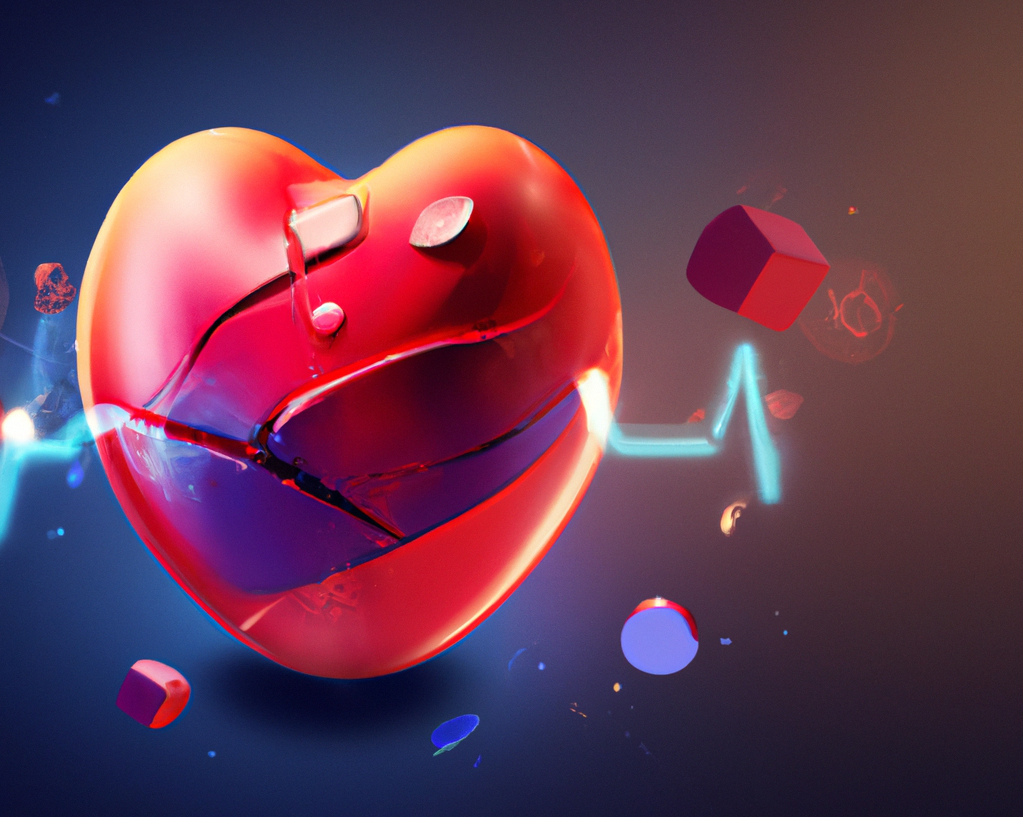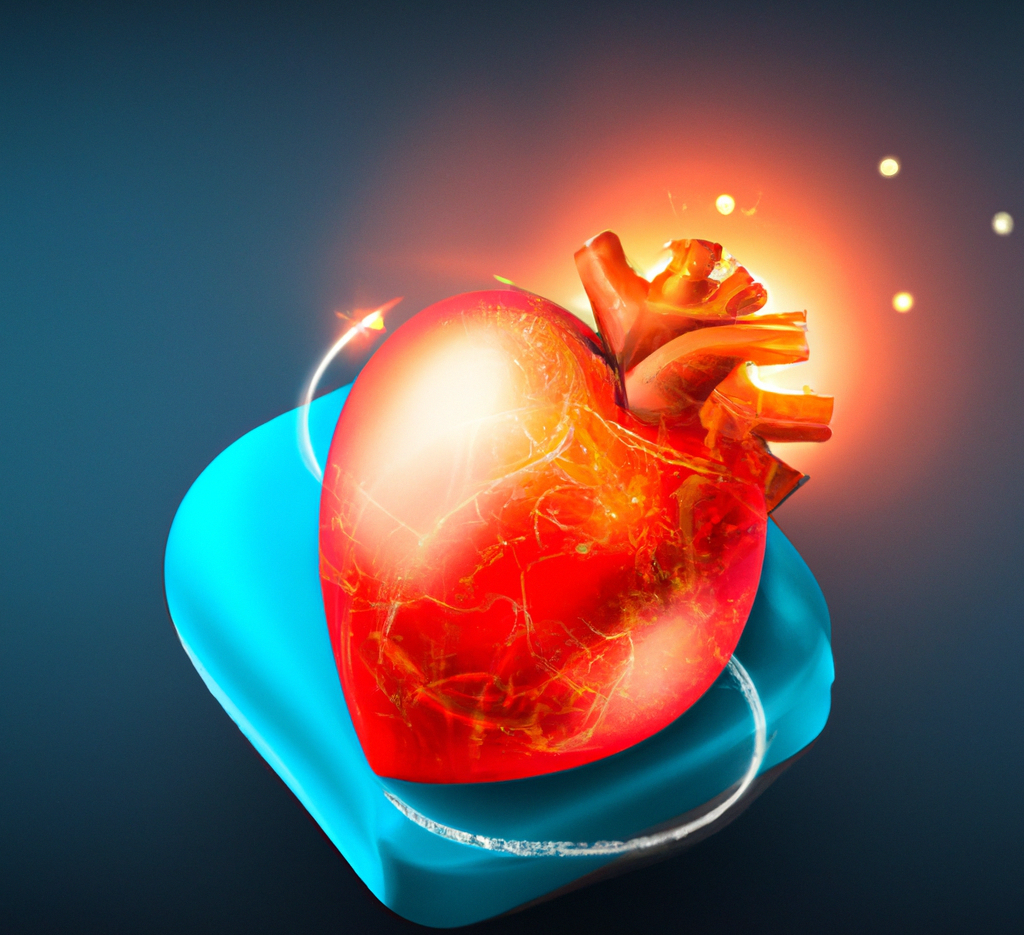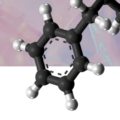A really scary phrase that stereotypically seems to be the lot of the elderly. However, for people who use certain classes of substances, the risk of heart problems increases. Also, the intensity of our life, stress loads, and other factors “rejuvenate” the statistics of this acute and dangerous condition every year. Let’s look into the causes, signs, and first aid for heart attack.
What is a Heart Attack?

A heart attack, also known as a myocardial infarction (MI), occurs when there is a blockage in one or more of the coronary arteries, which supply oxygen-rich blood to the heart muscle. This blockage usually occurs due to the formation of a blood clot (thrombus) within a narrowed or diseased coronary artery. Here is a detailed explanation of what happens during a heart attack:
- Coronary artery disease (CAD) development:
- Over time, a condition called coronary artery disease can develop, characterized by the buildup of fatty deposits called plaques on the inner walls of the coronary arteries.
- These plaques can narrow the arteries, a condition called atherosclerosis, reducing blood flow to the heart muscle.
- Plaque rupture and blood clot formation:
- In some cases, the plaque within a coronary artery may rupture or tear, exposing the underlying tissues to the bloodstream.
- Platelets, which are tiny blood cells involved in clotting, gather at the site of plaque rupture and form a blood clot.
- The blood clot can partially or completely block the coronary artery, reducing or cutting off the blood supply to a portion of the heart muscle.
- Ischemia and heart muscle damage:
- When the blood supply to the heart muscle is restricted due to the blockage, the affected region does not receive enough oxygen and nutrients, leading to ischemia (lack of blood flow).
- Ischemia causes the heart muscle cells to start dying if blood flow is not restored promptly.
- The severity of the heart attack depends on the size of the blocked artery and the amount of heart muscle affected.
All this concerns the more or less classical development of this pathology. However, we need to remember that among recreational substances there are options that contribute to the wear of the heart and blood vessels with uncontrolled and chaotic use
Causes of Heart Attack. Drugs Associations

The use of recreational drugs can have adverse effects on the cardiovascular system and increase the risk of heart attacks. Here are some substances commonly associated with heart attacks according to scientific data:
- Cocaine: Cocaine is a powerful stimulant that can significantly increase the risk of heart attacks. It can cause the arteries supplying the heart to constrict, reducing blood flow and oxygen to the heart muscle. Cocaine use can also lead to the formation of blood clots, which can block blood vessels and trigger a heart attack.
- Methamphetamine: Methamphetamine, also known as meth, is a potent central nervous system stimulant. Similar to cocaine, it can cause the constriction of blood vessels, leading to reduced blood flow to the heart. Methamphetamine use can also increase blood pressure and heart rate, putting additional strain on the cardiovascular system.
- Amphetamines: Amphetamines, such as Adderall, Mephedrone, and even MDMA, are stimulant drugs that can also elevate heart rate and blood pressure. Prolonged or excessive use of these substances can increase the risk of heart attacks, particularly in individuals with preexisting cardiovascular conditions.
- Synthetic cannabinoids (Spice, K2): Synthetic cannabinoids are man-made drugs that mimic the effects of cannabis. These substances can have unpredictable effects on the cardiovascular system, including a rapid increase in heart rate, high blood pressure, and disturbances in heart rhythm, all of which can contribute to heart attacks.
- Anabolic steroids: Although not commonly considered recreational drugs, anabolic steroids are sometimes misused for athletic performance enhancement. Steroid abuse can lead to an increase in blood pressure, cholesterol imbalances, and changes in heart structure and function, all of which can elevate the risk of heart attacks.
It is important to note that drug use can have different effects on individuals depending on various factors, such as the type and dose of the substance, route of administration, underlying health conditions, and individual susceptibility. The exact causes of heart attacks related to drug use can vary, but common mechanisms include vasoconstriction (narrowing of blood vessels), increased blood pressure, disrupted heart rhythm, blood clot formation, and inflammation in the blood vessels.
Signs of a Heart Attack

Heart Attack is a serious medical emergency that requires immediate attention. The signs and symptoms of a heart attack can vary, and often be non-specific, which complicates early diagnosis and care. However, I strongly recommend reading this list in order to recognize a possible acute problem in time.
- Chest pain or discomfort: This may feel like pressure, squeezing, fullness, or pain in the center of the chest. It can last for a few minutes or come and go.
- Pain or discomfort in other areas: Discomfort may also be felt in the arms (especially the left arm), back, neck, jaw, or stomach.
- Shortness of breath: Difficulty breathing, feeling out of breath even at rest, or experiencing sudden breathlessness.
- Sweating and nausea: Cold sweat, clammy skin, and feeling nauseous or vomiting can be present.
- Light-headedness or dizziness: Feeling faint, light-headed, or experiencing a loss of consciousness.
And although I do not want to potentiate hypochondria, in situations where a person has a pool of similar symptoms, they do not go away, there was used on the eve, or the person is in a long-term relationship with substances, plus they have known problems with the heart and blood vessels – calling an ambulance without delay, this is what you need to do to preserve health and life.
First Aid. What Should You Do with a Heart Attack?

- Call for emergency medical help: No options. This needs to be done quickly and without a doubt. If you suspect someone is having a heart attack, immediately call your local emergency number for assistance. Quick medical intervention is crucial in minimizing potential damage to the heart.
- Assist the person:
- Have them sit down and rest in a comfortable position.
- Loosen any tight clothing, such as a collar or belt, to help with breathing.
- Stay with them and provide reassurance.
- Monitor vital signs: If you are trained to do so and have access to the necessary equipment, you can check the person’s vital signs, including pulse rate and breathing. However, the priority should be to seek professional medical help rather than spending time on extensive assessments.
- Assist with prescribed medication: If the person has been previously prescribed medication for a heart condition, such as nitroglycerin, and it is readily available, help them take it as directed. However, it is important to note that you should not provide medication to someone who is not prescribed or allergic to it.
- Administer Aspirin: If the person is conscious and able to swallow, and there are no contraindications (such as an allergy or bleeding disorder), they may be given Aspirin. Aspirin can help prevent blood clots from worsening the heart attack.
- Initial dose: 160 mg orally once. For immediate action, a tablet containing no enteric substances can be chewed or crushed.
- Maintenance dose: 160 mg orally once a day for 30 days after a heart attack.
- Aspirin with prolonged release should not be used when a heart attack is suspected.
- Aspirin has been shown to reduce the risk of vascular mortality in patients with a suspected acute Heart Attack.
- Be prepared for cardiac arrest: In some cases, a heart attack caused may progress to cardiac arrest, where the heart stops functioning. If the person becomes unresponsive and stops breathing, immediately begin cardiopulmonary resuscitation (CPR) by performing chest compressions and rescue breaths. If you’re not trained in CPR, the emergency dispatcher can guide you through the process. I described this procedure in detail in the article First Aid for Unconsciousness
- Stay with the person: Offer reassurance and support while waiting for emergency medical services to arrive. Keep the individual calm and encourage them to remain still and avoid unnecessary movements.
- Provide information to medical professionals: When emergency medical services arrive, it’s important to provide them with any information you have regarding the use of drugs. This can help them better understand the situation and provide appropriate treatment.
- Support emotional well-being: Experiencing a heart attack can be a traumatic event for the person affected. Offer reassurance, stay calm, and provide emotional support during this challenging time. Keep in mind that their mental well-being is important for their overall recovery.
Remember, these recommendations about first aid for heart attack are general in nature. Each individual’s situation may vary, and it is essential to involve healthcare professionals for accurate diagnosis, treatment, and ongoing care. If you witness someone experiencing symptoms of a heart attack, particularly if illicit drug use is suspected, don’t hesitate to call emergency services immediately
Heart Attack Recovery

If a person really faces a heart attack, it’s not enough for him to just survive it. Even if the first aid for a heart attack was provided on time and correctly, a person may face severe consequences. This acute and dangerous condition creates new conditions of existence. And after it, you need to change your life one way or another in order to maintain health and prevent the recurrence of such situations. Here are some recommendations that can help with recovery after a heart attack
- Hospitalization and acute treatment:
- After a heart attack, the individual is typically hospitalized for immediate medical care and monitoring.
- The medical team may administer medications to stabilize the heart, dissolve blood clots, relieve pain, and manage other symptoms.
- Procedures such as coronary angioplasty, stent placement, or coronary artery bypass surgery may be performed to restore blood flow to the heart if necessary.
- Medications for long-term management:
- Following a heart attack, the individual may be prescribed several medications to support heart health and reduce the risk of future complications. These may include:
- Antiplatelet drugs (such as aspirin or clopidogrel) to prevent blood clot formation.
- Beta-blockers to lower heart rate and blood pressure, reducing the workload on the heart.
- ACE inhibitors or ARBs to manage blood pressure and improve heart function.
- Statins to lower cholesterol levels and reduce the risk of further blockages.
- Other medications to control symptoms, manage arrhythmias, or address specific conditions.
- Following a heart attack, the individual may be prescribed several medications to support heart health and reduce the risk of future complications. These may include:
- Cardiac rehabilitation:
- Cardiac rehabilitation is a structured program that focuses on improving heart health, physical fitness, and overall well-being after a heart attack.
- It typically involves supervised exercise training, education about heart-healthy lifestyle choices (such as diet, smoking cessation, and stress management), and psychological support.
- Participation in cardiac rehabilitation can significantly improve recovery outcomes, reduce the risk of future heart problems, and enhance quality of life.
- Lifestyle modifications:
- Adopting a heart-healthy lifestyle is crucial for recovery and long-term heart health:
- Follow a balanced diet that includes plenty of fruits, vegetables, whole grains, lean proteins, and low-fat dairy products. Limit intake of saturated fats, trans fats, cholesterol, sodium, and added sugars.
- Engage in regular physical activity as recommended by healthcare professionals. Gradually increase exercise duration and intensity under their guidance.
- Manage stress through relaxation techniques, mindfulness, hobbies, and social support.
- Quit smoking or avoid exposure to secondhand smoke. Smoking is a major risk factor for heart disease.
- Limit alcohol consumption to moderate levels, as excessive alcohol can have negative effects on heart health.
- Need to deal with the substances: If the heart attack was caused by drug use, it is crucial to address the underlying drug addiction. It is imperative to exclude the use of any substances for the recovery period. And in the future, abandon substances of the class of stimulants, euphoretics, and others that wear out the cardiovascular system.
- Adopting a heart-healthy lifestyle is crucial for recovery and long-term heart health:
- Emotional support:
- Emotional well-being is an essential aspect of heart attack recovery. It’s common to experience fear, anxiety, depression, or other emotional challenges.
- Seek support from healthcare professionals, counselors, support groups, or loved ones to address emotional concerns and develop coping strategies.
- Regular follow-up appointments:
- Ongoing monitoring and follow-up visits with healthcare professionals are crucial after a heart attack.
- These appointments allow for assessment of progress, adjustment of medications if needed, evaluation of lifestyle changes, and identification of any potential complications or risk factors.
It’s important to note that heart attack recovery is highly individualized, and specific recommendations may vary depending on the individual’s overall health, the extent of heart damage, and other factors. It’s essential to work closely with healthcare professionals to create a personalized recovery plan and follow their guidance for optimal outcomes.
Conclusion

I look with horror at the statistics on the incidence of Heart Attacks. Problems with the heart and blood vessels consistently occupy the first places among the causes of death. We wear out our tender hearts with fatty and unhealthy food, a sedentary lifestyle, poor ecology, overwhelming stress, and exogenous substances that promise us momentary relief, but only increase the risk of shortening the already short time in this world.
Yes, it’s tobacco, alcohol, and stimulants with euphoretics and synthetic cannabinoids. They can not only have a direct myocardiotoxic effect but also indirectly increase the wear of our heart due to sleep disorders, metabolism, and overall quality of life with prolonged and uncontrolled use.
But if many factors and causes are openly and explicitly spoken about, then there is much less information about the influence of recreational substances on the development of heart pathologies and the following acute conditions, and first aid for a heart attack, to my regret. And I try to fix it!
✔️
This marks the finish of today’s session. It is my hope that this piece was enlightening.
If you desire to advance the growth of this blog, I suggest the following actions:
- Subscribe to our social networks.
- Circulate a link to this article among your associates.
- Give recognition to this blog on relevant platforms or discussion groups.
Should you identify any necessary additions or corrections in this article, feel free to initiate a dialogue with me via Contact Form.
I am always open to communication.
I appreciate your valuable time and consideration 🫀




